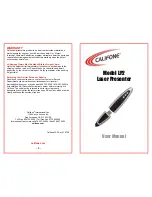
Pike Technical Manual
V5.2.0
185
Description of the data path
High SNR mode (High Signal Noise Ratio)
In this mode the camera grabs and averages a set number of images and outputs
one image with the same bit depth and the same brightness. This means that the
camera will output an 8-bit averaged image when an 8-bit image format is
selected (although the internal calculations are done with 14 bit).
Because of the fact that normally uncorrelated (photon-, amplifier-) noise dom-
inates over correlated noise (fixed pattern noise), adding two images will dou-
ble (6 dB) the gray levels but only increase the noise levels by
2
(3 dB).
This enhances both the dynamic range as well as the signal-to-noise ratio.
Consequently adding 256 8-bit images will lead to a potential signal-to-noise
enhancement of 24 dB or a resulting bit depth of 16 bit.
Note
Configuration
To configure this feature in an advanced register: See
177: Advanced register: High Signal Noise Ratio (HSNR)
Note
•
The camera must be idle to toggle this feature on/off.
Idle means: no image acquisition, no trigger.
•
Set grab count and activation of HighSNR in
one single
write access
.
Note
•
The averaged image is output at a lower frame rate
roughly equivalent to fps_old/N, where N is the number
of images averaged. In fact, due to camera internal con-
ditions, and according to which format and mode set-
tings are in use, it can vary slightly to be closer some-
times to 1/ ((N/fps_old) + T_shutter). It's impractical to
express in a formula or tables, across all camera models
and modes. But these notes should be sufficient to help
each user determine that the camera behaves as
described.
•
The potential SNR enhancement may be lower when using
more than 8-bit original bit depth.
•
Select 16-bit image format in order to take advantage of
the full potential SNR and DNR (
D
y
N
amic
R
ange)
enhancements.
•
For 8-bit video modes, the internal HSNR calculations are
done with 14 bit.
















































